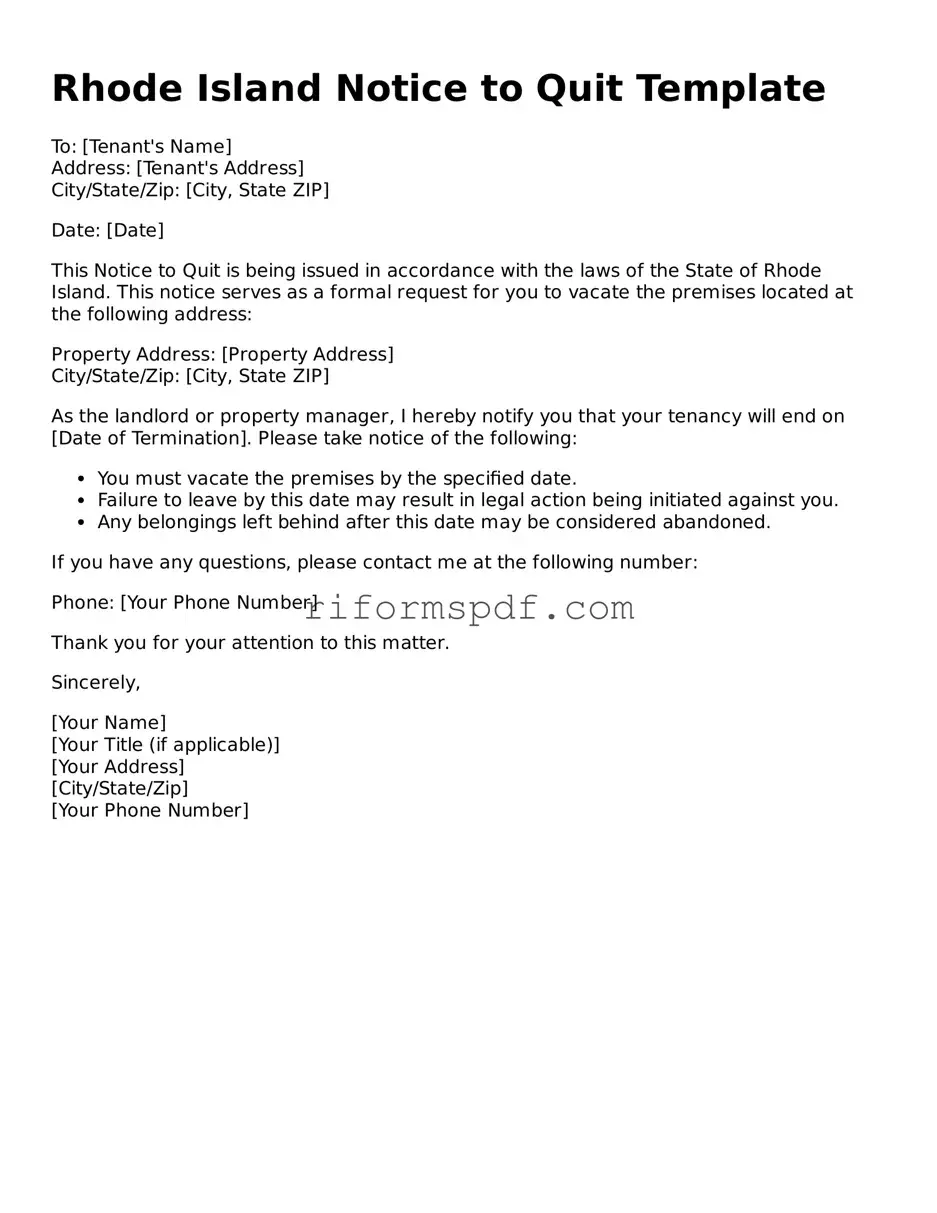Printable Notice to Quit Form for Rhode Island
The Rhode Island Notice to Quit form is a legal document used by landlords to formally request that tenants vacate a rental property. This essential notice outlines the reasons for termination of the lease and specifies a deadline for the tenant to leave. Understanding this form is crucial for both landlords and tenants to ensure compliance with state laws and to facilitate a smooth transition.
Launch Editor
